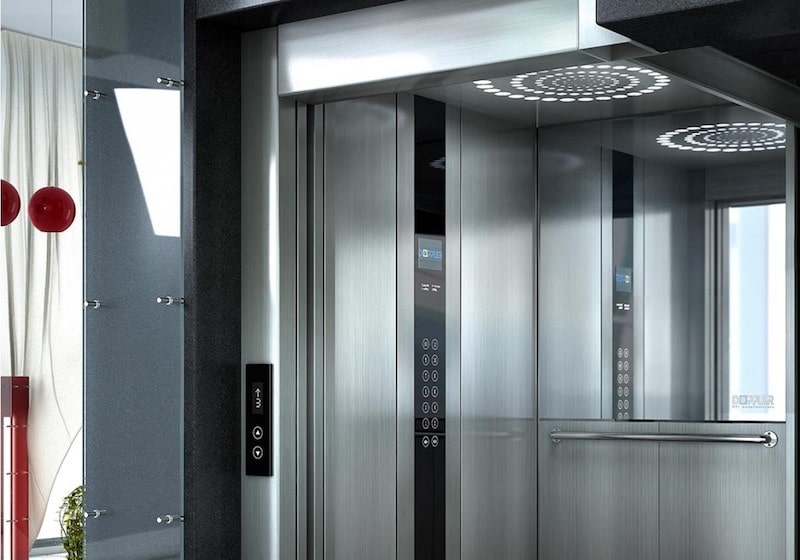London Lift Company: Giving Comprehensive Lift Solutions Across the Funding
London Lift Company: Giving Comprehensive Lift Solutions Across the Funding
Blog Article
Diving Into the Globe of Elevators: Typical Issues Faced by Different Lift Mechanisms
As we navigate via the upright transportation systems of modern-day buildings, elevators stand out as an important element of our everyday lives. From hydraulic elevators to grip systems and machine-room-less styles, each lift kind comes with its set of usual problems.
Hydraulic Elevators
Hydraulic lifts, usually favored for low-rise buildings, make use of fluid pressure to regulate the activity of the lift car (lift repair companies). This device involves a hydraulic pump pressing oil right into a cyndrical tube, triggering the elevator to relocate in the preferred direction. While hydraulic elevators are recognized for their peaceful and smooth procedure, they do come with their very own collection of usual concerns
One common issue with hydraulic elevators is oil leakage. In addition, concerns with the control system, such as defective shutoffs or a malfunctioning pump, can trigger interruptions in the elevator's motion.
Regular maintenance and timely repair services are important to make certain the smooth performance of hydraulic lifts. By attending to these usual problems proactively, building proprietors can lessen downtime and guarantee the safety and performance of their vertical transportation system.
Traction Lifts
When considering upright transportation systems in structures, one more typical kind other than hydraulic elevators is the grip elevator. Traction lifts operate making use of a system of ropes and weights that relocate the lift cars and truck by clutching onto the hoist ropes. This system enables for smoother and faster upright transport contrasted to hydraulic systems.
Among the common problems dealt with by grip lifts is rope wear. The continuous activity of the ropes within the traction system can bring about damage with time, potentially triggering the lift to breakdown or come to be harmful for usage. Routine assessments and upkeep of the ropes are important to ensure the elevator's correct performance and safety.
One more concern that traction elevators might experience is associated with the control system. Problems with the control system can lead to problems such as unpredictable movement, hold-ups in feedback times, or even total shutdowns. Routine testing and maintenance of the control system are crucial to stop such issues and make sure the elevator's dependability.
Machine-Room-Less (MRL) Lifts

Among the vital elements of MRL lifts is the small gearless traction device that is set up within the hoistway. This device successfully drives the lift auto without the need for large equipment located in standard traction elevators. In addition, MRL elevators normally use a weight system to balance the automobile, additional boosting their energy performance.
Despite their advantages, MRL lifts may deal with difficulties connected to repair and maintenance as a result of the constrained room for tools setup. Accessibility for servicing london lift company elements within the shaft can be restricted, requiring specialized training for specialists. Appropriate maintenance routines and routine examinations are vital to make certain the continued smooth procedure of MRL elevators.
Overloading and Weight Restriction Issues
Overwhelming and weight restriction problems are crucial problems in elevator procedures. Elevator suppliers design raises with certain weight capacities to make sure guest safety and security and devices durability.
When elevators are overloaded, it puts too much strain on the motor, cords, and various other components, potentially creating breakdowns or malfunctions. If they identify excess weight, security systems such as sensing units and overload sensors are in place to protect against elevators from moving. Furthermore, going beyond weight limitations can lead to raised power usage and damage on the elevator system.
To alleviate overwhelming concerns, constructing managers ought to plainly show weight limits in lifts and enlighten passengers on the value of adhering to these constraints - lift repair companies. Normal upkeep checks by qualified service technicians can additionally aid guarantee that elevators are operating within risk-free weight parameters. By addressing overloading and weight limitation issues proactively, building owners can enhance elevator safety and performance
Electric System Failings
Going beyond weight limitations in elevators can not just lead to mechanical problems but likewise potentially add to electric system failings within the lift framework. Electrical system failures are disabled platform lifts prices uk an essential issue in elevator procedure, as they can trigger unanticipated shutdowns, malfunctions, or even security threats.
Furthermore, power surges or fluctuations in the electrical supply can also disrupt the elevator's operation, impacting its performance and safety. These electrical disturbances can damage delicate lift parts such as control panels, circuit boards, or sensors, leading to system failings. Normal maintenance and examinations are important to identify and attend to prospective electric issues promptly, guaranteeing the reliable and safe operation of lift systems. By adhering to weight limits and conducting regular electrical system checks, building proprietors can alleviate the danger of electrical failures in elevators.
Conclusion

Hydraulic elevators, typically favored for low-rise structures, use fluid pressure to regulate the activity of the lift automobile.When taking into consideration upright transport systems in buildings, an additional common kind aside from hydraulic elevators is the traction lift. Traction lifts run making use of a system of ropes and weights that move the elevator vehicle by clutching onto the hoist ropes. Unlike standard elevators that need a separate device space to house the devices, MRL lifts incorporate many of the components within the shaft, removing the need for a specialized machine room.In verdict, lifts face common concerns such as hydraulic breakdowns, traction system failures, and electrical system problems.
Report this page